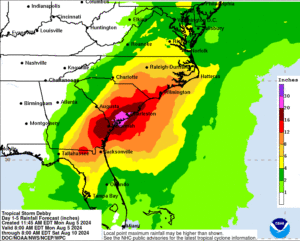On April 25, 2024, Monica Muñoz and Denise Denning were seen applying black encapsulation material to solar panels at Elin Energy’s manufacturing plant in Brookshire. The Inflation Reduction Act (IRA) has ignited a surge in manufacturing investments across the United States, particularly benefiting rural areas in need of economic growth. However, the future of these investments is uncertain, hinging on the outcome of the upcoming U.S. presidential election. Concerns have arisen among investors about the potential weakening or repeal of the IRA if a Republican candidate wins.
Since President Joe Biden signed the IRA into law in August 2022, companies have announced $133 billion in investments in clean energy and electric vehicle manufacturing, according to data from MIT and the Rhodium Group. Actual manufacturing investments have reached $89 billion, marking a 305% increase compared to the two years before the IRA. Overall, the IRA has spurred half a trillion dollars in investments across various sectors, including manufacturing, energy, and retail.
Trevor Houser, a partner at the Rhodium Group, highlighted the transformative impact of the IRA on the manufacturing sector, noting the unprecedented level of new manufacturing activity, particularly in clean energy. Since the IRA’s passage, 271 manufacturing projects for clean energy and electric vehicles have been announced, potentially creating over 100,000 jobs, according to the advocacy group E2.
Houser emphasized that clean energy investments are primarily concentrated in rural communities, unlike investments in AI, tech, and finance, which are typically centered in big cities. The IRA has also accelerated renewable energy deployment, with $108 billion invested in utility-scale solar and battery storage projects, resulting in significant growth in these sectors.
Despite the positive developments, the “manufacturing renaissance” remains fragile, according to Houser. Chris Seiple of Wood Mackenzie’s power and renewables group noted that the resurgence of new factories would not have occurred without the IRA. Former President Donald Trump has threatened to dismantle the IRA, advocating for increased oil, gas, and coal production.
Trump’s threats have caused concern among investors, leading to a decline in clean energy stocks. Mark Widmar, CEO of First Solar, reported growing constraints on capital access for solar companies. Investors are hesitant to make decisions until there is more clarity on the policy environment for the solar industry. Some utilities and oil companies are considering shifting their focus back to fossil fuel projects.
There is fear that Republicans might use the reconciliation process to roll back the IRA to finance making Trump’s 2017 tax cuts permanent. Trump has also suggested ending the $7,500 tax credits for electric vehicles, which have significantly boosted zero-emission vehicle sales since 2022.
Despite these challenges, renewable energy executives and analysts believe that the investment, production, and manufacturing tax credits driving clean energy spending will likely survive even under a Republican administration. A significant portion of IRA investments, 85%, has gone to GOP congressional districts, and Trump’s campaign platform supports expanding domestic manufacturing.
The dynamics of the presidential race have shifted, with Vice President Kamala Harris now leading Trump in national polls. John Ketchum, CEO of NextEra Energy, noted that more Republican lawmakers are embracing clean energy credits due to their positive impact on states and communities. Eighteen Republican members of Congress have warned against repealing IRA energy tax credits, arguing that it would undermine private investments and ongoing development.
John Berger, CEO of Sunnova, expressed caution regarding the impact of the presidential race on clean energy stocks, suggesting that the situation remains highly uncertain.
